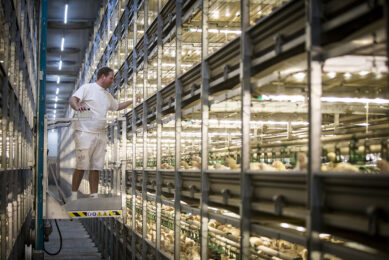EFSA: Poultry meat inspection reviews public health risks
The European Food Safety Authority’s (EFSA) has published a scientific opinion suggesting that traditional poultry meat inspection may not suffice to fully address the most relevant biological hazards to public health: Campylobacter spp., Salmonella spp. and ESBL/AmpC gene-carrying bacteria.
EFSA’s opinion, that aims to provide a scientific basis for the modernisation of poultry meat inspection, proposes that risk-based interventions coupled with the improved use of information shared between farms and abattoirs (known as Food Chain Information) would be more effective. Such information would also play an important role in identifying animal health and welfare issues. Finally, the Authority concludes that chemical substances found in poultry meat are unlikely to pose an immediate or acute health threat to consumers.
In addition to identifying and ranking the main risks for public health from the current poultry meat inspection system, EFSA was asked to: assess the strengths and weaknesses of the current inspection methodology; recommend methods that take into account the hazards not addressed by current meat inspection; and recommend adaptations of methods and/or frequency of inspections based on the hazard rankings and harmonised epidemiological indicators.
Biological hazards
The food-borne hazards Campylobacter, Salmonella, and bacteria carrying extended spectrum β-lactamase (ESBL)/AmpC genes, – due to their prevalence and impact on human health – were identified as priority targets in the inspection of poultry meat at abattoir level. EFSA confirms that current inspection methods do not enable the detection of these hazards and, more broadly, do not differentiate food safety concerns from considerations related to meat quality, prevention of animal diseases or occupational hazards.
The main recommendations regarding biological hazards are to:
- introduce a comprehensive food safety assurance system, including clear targets for what should be achieved in poultry carcasses and, where appropriate, with respect to a particular hazard for poultry flocks;
- utilise a variety of control options available for the main hazards, at both farm and abattoir level, in order to meet these targets (some of these measures have been described and assessed in earlier EFSA opinions);
- collect and analyse Food Chain Information at farm and abattoir levels to enable risk categorisation of flocks and classification of abattoirs according to their capacity to reduce carcass contamination.
Animal Health & Welfare
EFSA notes that meat inspection is a valuable tool for surveillance and monitoring of specific animal health and welfare conditions. If as according to EFSA’s recommendation, visual post-mortem inspection is removed, other approaches should be applied to compensate for the associated loss of information with regard to animal disease and welfare conditions. Extended use of Food Chain Information has the potential to compensate for some (but not all) of the information on animal health and welfare that would be lost if visual post-mortem inspection is removed.
Contaminants
Dioxins, dioxin-like polychlorinated biphenyls, the antibiotics chloramphenicol, nitrofurans and nitroimidazoles were identified as chemical substances of high potential concern in poultry meat, based on pre-defined criteria. However, EFSA concluded that chemical substances in poultry meat are unlikely to pose an immediate or acute health risk for consumers. As the risk of occurrence of chemical substances for individual farms and poultry species varies due to the diversity of poultry farming in the EU, the experts recommend that:
- sampling of poultry carcasses should be based on the available Food Chain Information, including results from feed controls and the frequency of sampling for farms should be adjusted accordingly;
- control programmes for residues and contaminants should include new and emerging substances and should be regularly updated.
EFSA also proposes harmonised epidemiological indicators for the food-borne biological hazards highlighted by the opinion. The indicators would be particularly useful in the context of the proposed comprehensive food safety assurance system, enabling the categorisation of farms, flocks and abattoirs according to risk as well as the setting of targets for final chilled carcasses.
- Scientific Opinion on the public health hazards to be covered by inspection of meat (poultry)
- Technical specifications on harmonised epidemiological indicators for biological hazards to be covered by meat inspection of poultry













